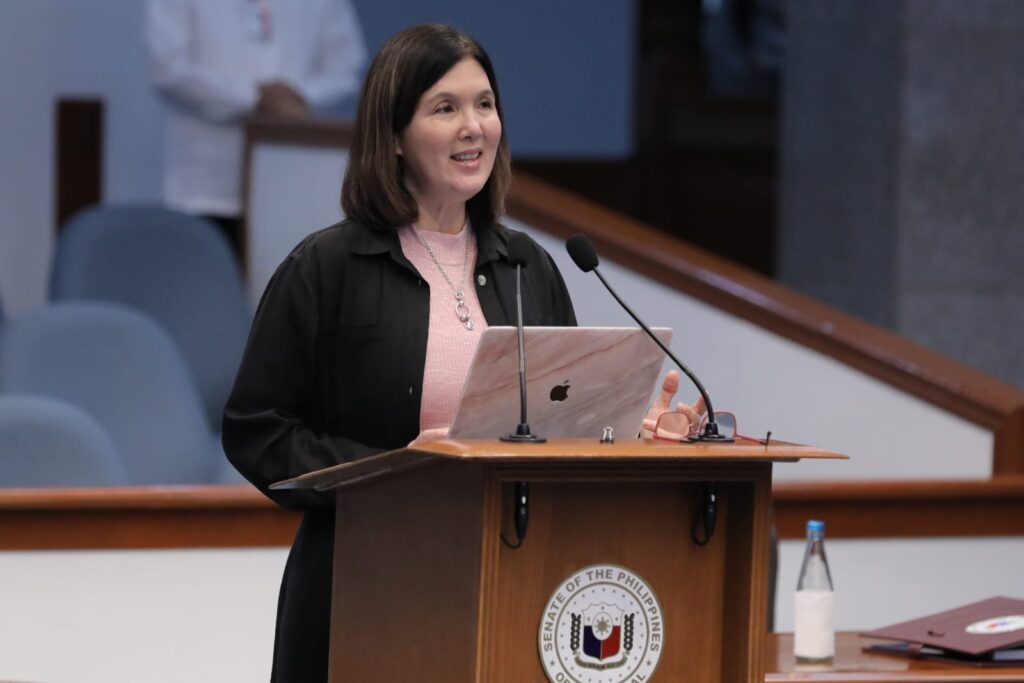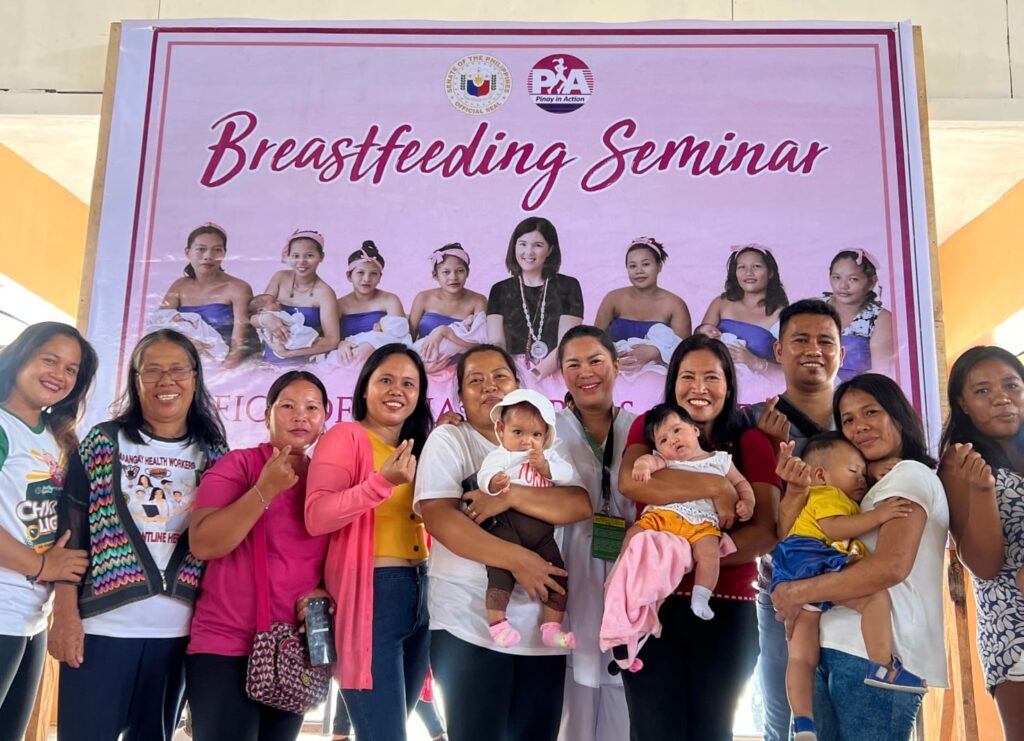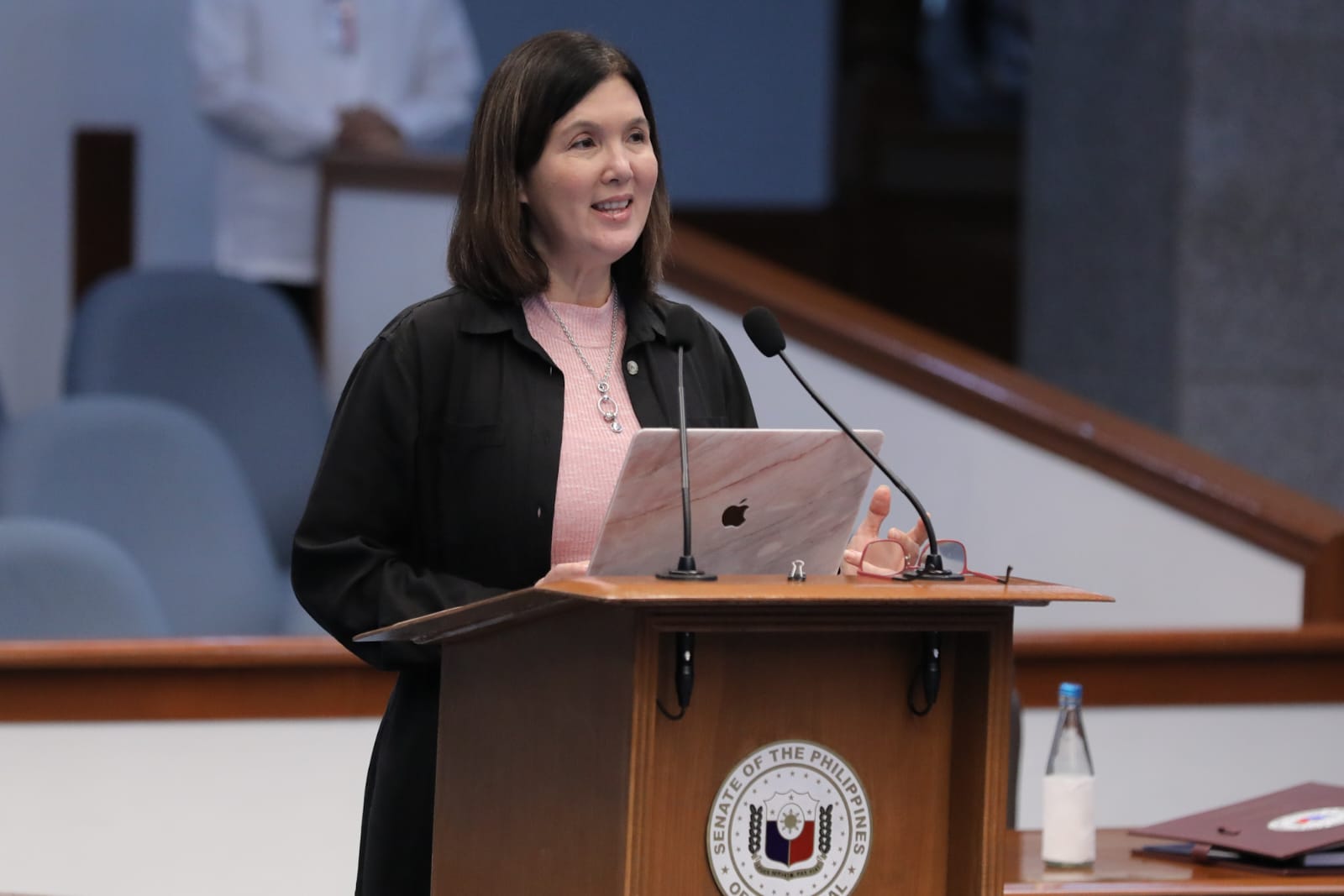Privilege speech on August as ‘National Breastfeeding Awareness Month’
By Senator Pia S. Cayetano
I rise on a matter of personal and collective privilege. Every month of August, I deliver a similar speech on the occasion of National Breastfeeding Month. The right to good nutrition is included in the Convention on the Rights of a Child. And Mr President, good nutrition begins with the act of breastfeeding. And of course, for a mother to breastfeed her child, she must also be fed well.
Mr President, I stand not just as a legislator, but also as a mother who has breastfed her children. This is a policy issue that I’ve been advocating for almost 20 years. The World Health Organization and United Nations Children’s Fund (UNICEF) recommend that children initiate breastfeeding within the first hour of birth and be exclusively breastfed for 6 months. Let me just share, colleagues, when I became a Senator, it was still very common for hospitals to immediately offer either canned milk or water. And even water has been deemed… well water is water, but definitely secondary to breast milk. So all of these practices, we tried to address.
And as I deliver this speech, my staff is also checking on the compliance with our existing laws in all the health centers and hospitals across the country. Because when a baby is not initially exclusively breastfed, all the positive effects of breastfeeding are somehow diminished. Of course, there are still positive effects, but they are somehow diminished. And the success of a mother in breastfeeding is also affected if early on, she is introduced to feeding her baby canned milk.
It’s said again and again, but it’s worth repeating. Breast milk provides a baby not just immunity, but also addresses malnutrition. It is a baby’s first kind of natural immunization. Many mothers, including myself, will attest to the fact that our breastfed babies had well baby visits to the doctors, which means nagbibisita ang anak namin sa ospital, hindi dahil sa may sakit sila, pero para sa kanilang routine checkup and immunization. They have immunity na panlaban nila sa sakit. And that is something that we always want mothers to understand. Kasi libre siyang panlaban sa sakit.
Breast milk actually provides optimum nutrition, boosting the infant’s immune system and brain development, as well as protecting them against disease and death, either during infancy or childhood.
And what I’d also like to share is during the EDCOM II meeting last week, it was our quarterly meeting, in the presentation made by the group I belong to, it is the group in charge of early education and basic education, it was very interesting what was highlighted, one of the factors that really affects the ability of a child to cope with the school work and perform well… the records have shown that our children are low performing in school. And one of the reasons attributed to it is their nutrition. And this goes back to the time they were in their mother’s womb and in the 0-6 months, 6-12 months, 12 months to 4 years, and so on. So, we can directly relate the nutritional defects that an infant would have later on in their poor performance in school. And that is why I take time to explain the importance of breastfeeding because it is also directly contributory to the performance we see in our children’s school work.
Breastfeeding is one of the most effective ways to ensure child health and survival, as breast milk contains antibodies that prevent several prevalent pediatric ailments. And it is secure and hygienic. So when we speak of hygienic, the illustration I will give is when we have areas that have to deal with calamities such as typhoons and even volcanic eruptions, and when a mother and child are displaced and they have to resort to feeding other than breast milk, incidents of infant illness and even mortality go up because the introduction of bottle feeding when the water is not clean then becomes a source of infection. And it has been directly known to be attributable to the death of infants.
In fact, studies now show that there is a positive connection between breastfeeding and climate change. It is more sustainable as it helps reduce greenhouse gasses and lessens the environmental impact of food alternatives. So sa madaling salita, yung breast milk ay eco-friendly. When a baby is given alternatives like formula, that goes through the process of manufacturing, which contributes to greenhouse gasses.
Breastfeeding uses fewer resources and produces minimal or zero waste. A recent study suggests that a micronutrient, a sugar molecule called myo-inositol, found in breast milk provides a significant benefit to the developing brains of newborns. The scientists at the Jean Mayer USDA Human Nutrition Research Center on Aging (HNRCA) at Tufts University found that it increased both the size and number of synaptic connections between neurons in the developing brain of the child.
So what is the Philippines’ situation? Well, based on the data of the National Nutrition Council, the exclusive breastfeeding rate is 34% and the early initiation of breastfeeding is only 57%, contrary to the recommended levels. The target set by the Global Breastfeeding Collective (GBC) is for 70% of infants in each country to be nourished through breastfeeding by the year 2030.
Based on the 2017 Philippines National Demographic and Health Survey (NDHS), the percentage of newborn infants receiving a prelacteal feed increases with increasing household wealth.
Please note that the reason this is just 2017 is because this study is only made every 4 years, so we do hope that there will be available data very soon. Please note also that prelacteal feeding is the “administration of any substances other than breast milk to newborn babies during the first 3 days after birth. Despite its negative health outcomes, it is commonly practiced in developing countries.” It is a barrier for implementation of optimal breastfeeding practices.
Dito po sa Philippines, ang kadalasan is tinatawag na ‘am,’ ito yung tubig sa bigas and then hinahaluan nila ng asukal. Why would they do that? I would suppose it is because of the misinformation that the mother’s milk is not enough. And kung meron mang lumabas na gatas, ito ho ay kulay dilaw at kokonti. And this is called colostrum. So kung hindi alam ito ng nanay at hindi sapat ang information niya, kakabahan siguro siya at iisiping kailangan niya magbigay ng ibang klaseng pagkain. Kung wala naman siyang pera, ang ibibigay niya is tubig nga na may asukal. Palibhasa ito yung tubig na galing sa bigas, akala nila may nutrition yun. This is not correct. And then para naman sa may kaya, at bibili ng formula, hindi naman ito kapareho ng breast milk na di hamak na mas masustansya. So either way, I feel like marami tayong opportunity to improve with information sa mga nanay.
I just want to tie it in also to our SDGs. Breast milk is shown to affect several of the SDGs:
SDG 2: Zero Hunger
SDG 3: Good Health and Well-Being
SDG 4: Quality Education
SDG 5: Gender Equality
SDG 10: Reduced Inequalities
SDG 12: Responsible Consumption and Production
SDG 13: Climate Action
SDG 17: Partnerships for the Goals
Just very briefly, hindi ko na iisa-isahin yun… On gender equality, precisely the reason why Sen. Risa [Hontiveros], the Deputy Minority Leader and I, fought for the 105-Day Maternity Leave, supported of course by our Minority Floor Leader who’s a very supportive father of a breastfed child. We fought for this because we need to give mothers time to breastfeed. Kung hindi natin sila susuportahan by giving working mothers more maternity leave, the studies show that napapaiksi ang time na nagbe-breastfeed sila.
SDG 12 happens to be my favorite, so I’ll say something about it. Responsible consumption and production. So kung bibili pa ng gatas, meron pang de lata, meron pang mga bote and karamihan ng bote, plastic, hindi rin ho ganun kadaling mag-recycle nun. Unlike breastfeeding, like I said, it’s very eco-friendly.
So to recap, ang legislation natin in the Philippines on breastfeeding, it started with EO 51, which is actually passed way back in 1986 way before I became a senator. EO 51 is the National Code of Marketing of Breastmilk Substitutes, Breastmilk Supplements, and Other Related Products. And it regulates the marketing of infant milk formula. Ito yung kadalasan na naa-abuse kasi well-meaning people na gusto mag-donate during calamities think na nakakatulong sila by donating milk formula, when in fact, it becomes a deterrent for mothers to continue breastfeeding kapag nag-umpisa sila ng formula milk.
In 1992, still way before we became a senator, RA 760 or the Rooming In and Breastfeeding Act, was authored by the late Sen. Ed Angara, the father of our colleague, Sen. Sonny Angara. This law adopts the rooming-in of infants with their mothers immediately after birth. This is such an important measure because this is the law that mandated that even if you are in a private hospital, kailangan kadikit mo kaagad ang baby mo. Hindi yung nasa nursery ang baby tapos ikaw nasa room o nasa ward, hiwalay kayo. So this really was a game changer.
And then, in the 14th Congress of which I was already a member, I worked with the late Sen. Angara to sponsor RA 10028 or the Expanded Breastfeeding Promotion Act of 2009. This is the law that established lactation stations in all health and non-health facilities, including public & private offices, schools, PUV terminals, shopping malls, etc. I am always delighted when I see lactation stations or breastfeeding rooms all over the country. Nakakita na ako nyan sa station ng mga RORO, kahit sa mga maliliit na malls, yung mga sikat na mall nauna na sila, pero yung mga smaller malls meron. Yung mga airport natin, finally, meron. I know of horror stories and I have experienced it na kakatukin ka ng kung sinumang tao na gusto gumamit ng CR mo pero ikaw as a breastfeeding mom, nagpa-pump ka doon. And you are so stressed out because may ibang gustong gumamit ng CR pero wala ka naman ibang lugar kung saan pwedeng mag-express ng milk. And this is precisely why we passed this law.
The law also grants nursing employees paid lactation periods of 40 minutes for every 8 hours of work. Actually, kaunti yung 40 minutes. Hindi mo rin malulubos ang pag-express ng milk mo within 40 minutes, but this was a compromise that we know that we have to make sometimes. At least naumpisahan. So this is in addition to the meal breaks of employees.
Other laws I mentioned of course is the 105-Day Expanded Maternity Leave Law, RA 11210, and then there’s also RA 11148, the First 1,000 Days Act, and then there’s also RA 10821, or the Children’s Emergency Relief and Protection Act, which sets a standard for the protection of children, including breastfeeding moms, especially before, during, and after a disaster.
So for the information of all, our guests and our future resource persons, we have our own lactation station in the Senate. We used to have, and I will check if we still have the signages on the ground floor, such that when we have resource persons, they know that if they attend our hearings and they are nursing moms, they can use these rooms kasi they are open to all our guests.
And then just to complete it, because this is required by our law, when I was a member of the House, we also were part of a team that moved for the creation of lactation rooms in the House of Representatives and this was continued by our now colleague, my brother Alan [Cayetano] when he was Speaker of the House, along with his wife, also then Congresswoman, now Mayor Lani Cayetano.
So as I said, it’s very important that we continue to educate people, so throughout the year, not just during breastfeeding month, my team, Pinay In Action, conducts seminars on women’s health, and breastfeeding promotion. These are normally done with barangay health workers because they are our frontliners. And I’d like to take the opportunity to thank our barangay health workers, the nutrition scholars, all over the country, including of course the health officers of the municipalities and cities. Because it is in your hands na natututo ang mga nanay mag-breastfeed at alagaan ang baby nila.
Also important is the human milk bank. I think this was about a year or so ago [referring to a photo flashed on the screen] that we inaugurated the new and improved human milk bank in the Dr. Fabella Memorial Hospital. The Dr. Fabella Hospital is a pioneer in the national breastfeeding program, and so it was very timely na in-upgrade nila ang kanilang milk bank. We also have this in Taguig City, there is also in Makati City, and a few others.
And to conclude, your honors, as we celebrate breastfeeding month, I would like to thank many of our colleagues who are supportive breastfeeding fathers, and may your tribe continue. The Majority Floor Leader is raising his hand in victory. And we are grateful because it is very important that women, mothers, get the support they need.
In the last collage of photos, you will see photos of the head of my legislative team, si Atty Abbi [Miranda], naka-highlight diyan, expressing while working. That is our goal. To normalize breastfeeding. So thank you again, dear colleagues. #




Leave a Reply